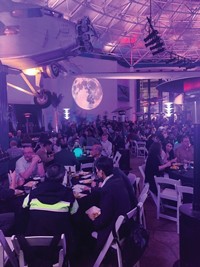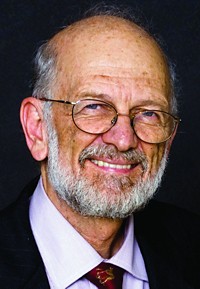Advertisement
Grab your lab coat. Let's get started
Welcome!
Welcome!
Create an account below to get 6 C&EN articles per month, receive newsletters and more - all free.
It seems this is your first time logging in online. Please enter the following information to continue.
As an ACS member you automatically get access to this site. All we need is few more details to create your reading experience.
Not you? Sign in with a different account.
Not you? Sign in with a different account.
ERROR 1
ERROR 1
ERROR 2
ERROR 2
ERROR 2
ERROR 2
ERROR 2
Password and Confirm password must match.
If you have an ACS member number, please enter it here so we can link this account to your membership. (optional)
ERROR 2
ACS values your privacy. By submitting your information, you are gaining access to C&EN and subscribing to our weekly newsletter. We use the information you provide to make your reading experience better, and we will never sell your data to third party members.
Biological Chemistry
Live from Pittcon
by Bibiana Campos Seijo
March 13, 2017
| A version of this story appeared in
Volume 95, Issue 11
I recently returned from attending Pittcon in Chicago. The annual conference and exposition on laboratory science took place March 5–9, and as we have come to expect from events of this size, it offered a little something for everyone: a packed technical program, workshops, poster sessions, awards, short courses, and plenty of networking opportunities.
Keep an eye out in the coming weeks for in-depth reports about the latest research and trends in analytical chemistry and instrumentation by C&EN reporters Marc Reisch and Celia Arnaud. To whet your appetite, here are a few nuggets of what happened during the show.
From the technical program, it is worth highlighting the keynote lecture by Howard Hughes Medical Institute investigator and Stanford University professor Karl Deisseroth. He spoke about the rapidly expanding field of optogenetics, in which scientists modify specific cells in the nervous systems of lab animals so that they respond to light. This allows researchers to use light to explore how stimulating specific neural circuits may affect the behavior of animals—how they interact with each other and their surroundings, how they move. Deisseroth is a pioneer in this field, and aptly, he was part of the group that helped launch then-president Barack Obama’s BRAIN Initiative in 2013. The initiative, which is ongoing, was designed to support the development and application of technologies that will help scientists better understand brain function and improve how we can cure, treat, and prevent its disorders.
Another familiar face in the lecture program, and also focusing on the brain, was Analytical Chemistry Editor-in-Chief Jonathan Sweedler of the University of Illinois, Urbana-Champaign. His talk covered the development of analytical tools that allow cell-by-cell characterization in the brain. Sweedler discussed the advancements made in single-cell profiling using mass spectrometry techniques that can be performed on large cellular populations. Such methods allow researchers to sample thousands of cells at the same time and identify some of the most important—not necessarily abundant—metabolites in them. Understanding how neurons use these chemicals to talk to each other and what role they play during learning or how they affect memory or different human behaviors is crucial to begin to address brain conditions such as mental illness or addiction.
Besides Deisseroth and Sweedler, other speakers taking part in the technical program were Nobelist W. E. Moerner from Stanford University, Shana Kelley from the University of Toronto, and Chad Mirkin from Northwestern University.
On the exhibition floor, Pittcon’s live demos proved very popular. Now in their second year, they included dynamic image analysis systems designed to extract information about a sample’s particle size and shape; ultrasensitive mass spectrometers that could analyze the air at the show in real time and identify trace organic compounds; and portable Raman detectors for real-time monitoring of chemicals through white plastic containers, colored glass bottles, or manila envelopes. These demonstrations were limited in terms of the scope of what was possible (for example, there was no running water available), but they were entertaining and educational and were particularly suited to showcase portable technology. A fun addition, although it was unclear how it was connected to analytical chemistry or Pittcon, was the Lego gravity car racing, where attendees could build cars and then compete with each other.
For C&EN, an exciting moment was when as part of the awards program, another familiar face, 2016 Talented 12 winner Renã Robinson from the University of Pittsburgh, was recognized with the Pittsburgh Conference Achievement Award. We’d like to congratulate her on this accolade. Which reminds me: Keep nominating for this year’s T12 class at cenm.ag/t12nom.
The deadline is April 1.
Views expressed are those of the author and not necessarily those of ACS.




Join the conversation
Contact the reporter
Submit a Letter to the Editor for publication
Engage with us on Twitter